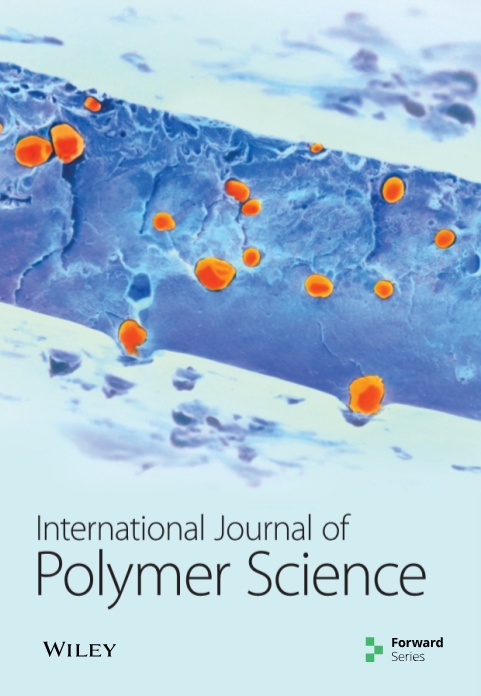Effect of Raphia vinifera Fibre Size and Reinforcement Ratio on the Physical and Mechanical Properties of an Epoxy Matrix Composite: Micromechanical Modelling and Weibull Analysis
IF 4.4
4区 化学
Q2 POLYMER SCIENCE
引用次数: 2
Abstract
This study evaluates the effects of lengths and reinforcement ratio of Raphia vinifera fibres (RVFs) on the physical and mechanical properties of an epoxy matrix composite. Three volume fractions (20%, 30%, and 40%) and three lengths (5, 10, and 15 mm) of fibres were used to produce the composite, and the samples were subjected to the absolute and apparent density, porosity, water absorption rate, and tensile and flexural strength. The probability of failure of the composite is described by the means of two-factor Weibull model. In addition, a theoretical approach to predict mechanical characteristics based on empirical models was carried out. The results show that the addition of RVF decreases the density of the composite, while the porosity and absorption rate increase. The mechanical test shows that the tensile and flexural stress and Young’s modulus of the composite are lowered compared to those of the resin alone. Multivariate analysis of variance (MANOVA) and Tukey test showed that fibre lengths and reinforcement ratio significantly lower the mechanical properties of the composite. The distribution of strength and Young’s modulus follows Weibull’s law. Furthermore, the Cox–Krenkel mathematical model has the best approximated model for the experimental results after the tensile test. Based on these results, this material could be used as reinforcement parts for vehicle backrests or interior decoration in the construction industry.青花纤维尺寸和增强率对环氧基复合材料物理力学性能的影响:微观力学建模和威布尔分析
本研究评估了葡萄纤维(RVF)的长度和增强率对环氧基复合材料物理力学性能的影响。三种体积分数(20%、30%和40%)和三种长度(5、10和15 mm)的纤维制备复合材料,并对样品进行绝对密度和表观密度、孔隙率、吸水率以及拉伸和弯曲强度测试。用双因素威布尔模型描述了复合材料的失效概率。此外,还提出了一种基于经验模型预测机械特性的理论方法。结果表明,RVF的加入降低了复合材料的密度,同时增加了孔隙率和吸收率。力学测试表明,与单独的树脂相比,复合材料的拉伸和弯曲应力以及杨氏模量降低。多元方差分析(MANOVA)和Tukey检验表明,纤维长度和增强率显著降低了复合材料的力学性能。强度和杨氏模量的分布遵循威布尔定律。此外,Cox–Krenkel数学模型具有拉伸试验后实验结果的最佳近似模型。基于这些结果,这种材料可以用作建筑行业中车辆靠背或内部装饰的加强件。
本文章由计算机程序翻译,如有差异,请以英文原文为准。
求助全文
约1分钟内获得全文
求助全文
来源期刊

International Journal of Polymer Science
POLYMER SCIENCE-
CiteScore
6.10
自引率
0.00%
发文量
55
审稿时长
>12 weeks
期刊介绍:
The International Journal of Polymer Science is a peer-reviewed, Open Access journal that publishes original research articles as well as review articles on the chemistry and physics of macromolecules.
 求助内容:
求助内容: 应助结果提醒方式:
应助结果提醒方式:


